Configuring Layer 3 interfaces
Command line interface
admin@PA-5050> configure Entering configuration mode [edit] admin@PA-5050# edit network interface [edit network interface] admin@PA-5050# set ethernet ethernet1/3 layer3 ip 200.1.1.1/30 [edit network interface] admin@PA-5050# set ethernet ethernet1/4 layer3 ip 10.0.0.1/24 [edit network interface] admin@PA-5050# commit ....55%99%.....100% Configuration committed successfully Interface ethernet1/3 has no zone configuration. Interface ethernet1/3 has no virtual-router configuration. Interface ethernet1/4 has no zone configuration. Interface ethernet1/4 has no virtual-router configuration. [edit network interface] admin@PA-5050#
Web interface
Click on Network tab then select Interfaces.
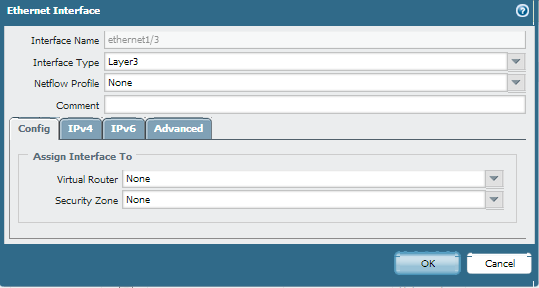


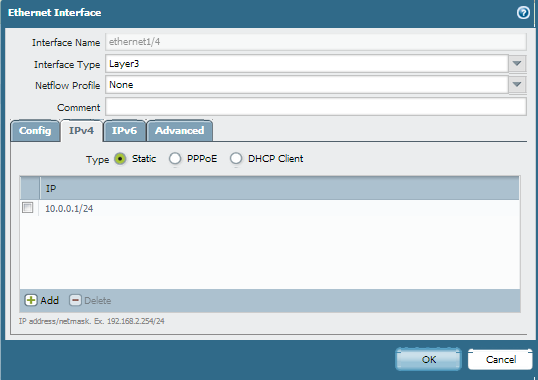
Define zone for L3 interface
Command Line Interface
admin@PA-5050> configure Entering configuration mode [edit] admin@PA-5050# set zone trust network layer3 ethernet1/4 [edit] admin@PA-5050# set zone untrust network layer3 ethernet1/3
Web Interface
Click Network then select Zones, you can create your zone or use the default trust and untrust zones.
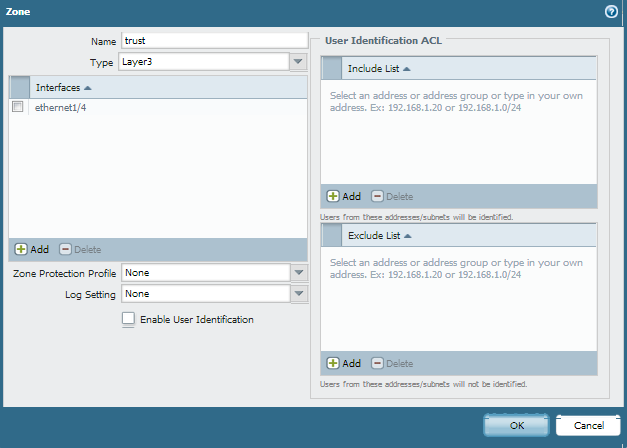
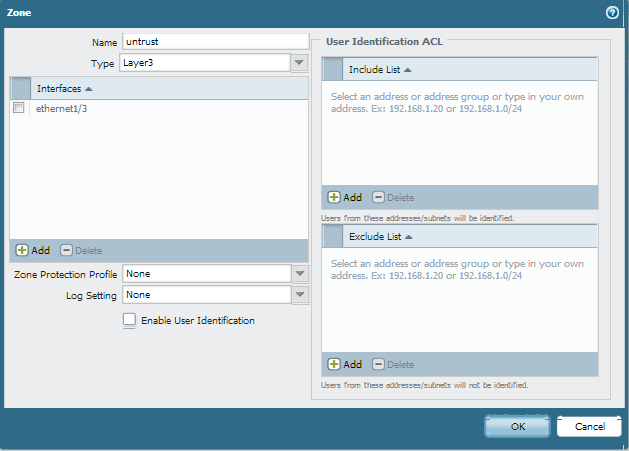
Create virtual router to define default route
Command Line Interface
admin@PA-5050> configure Entering configuration mode [edit] admin@PA-5050# set network virtual-router static-route routing-table ip static-route default-route destination 0.0.0.0/0 nexthop ip-address 200.1.1.2 [edit] admin@PA-5050# set network virtual-router static-route interface ethernet1/3 [edit] admin@PA-5050#
Web Interface
Click on Network, select virtual-router.
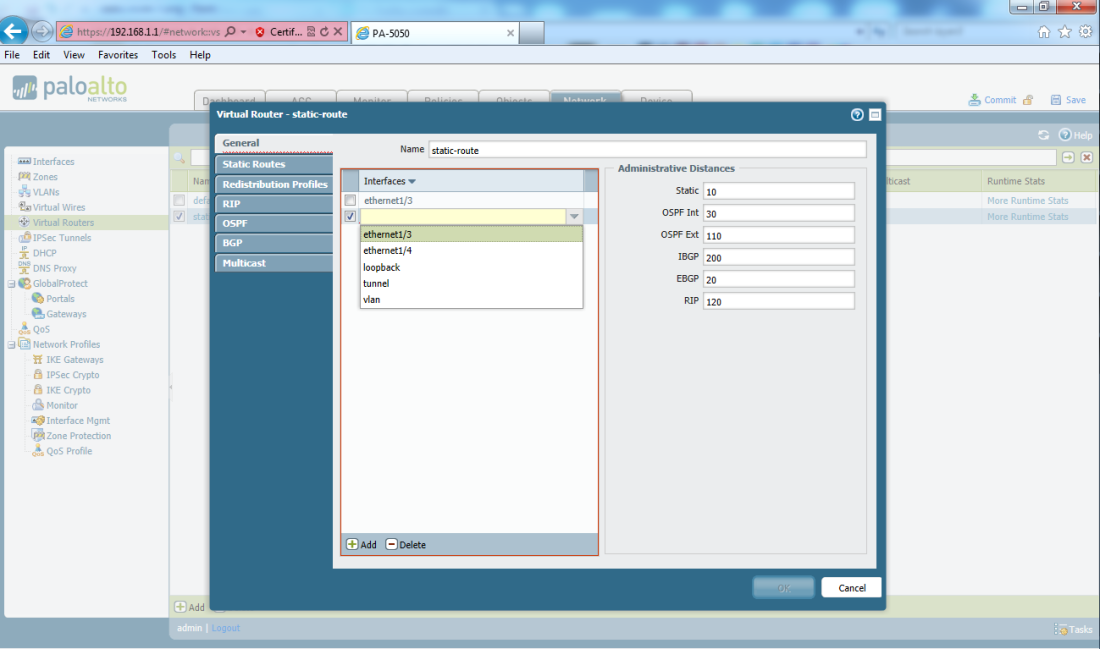
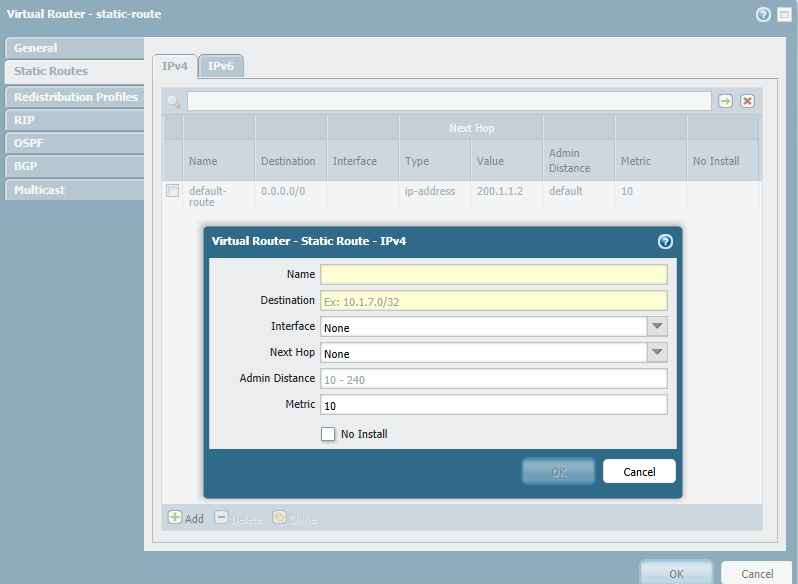
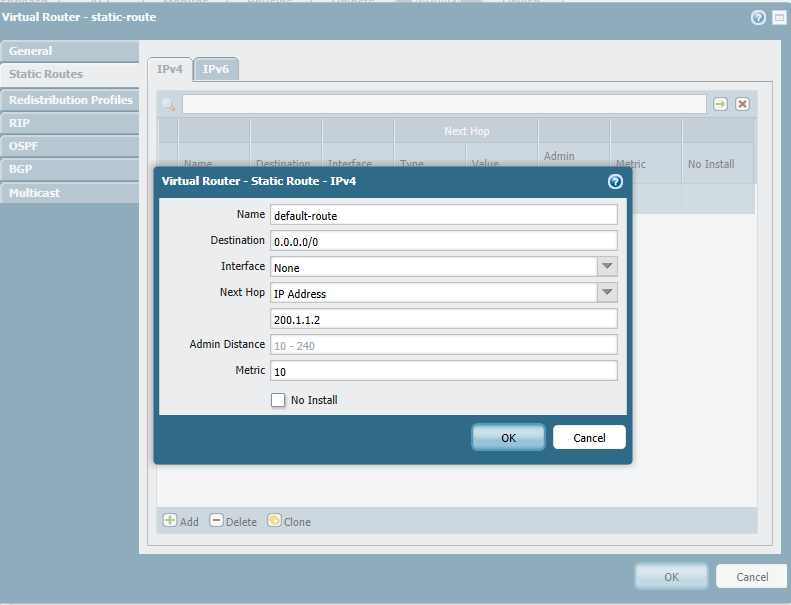
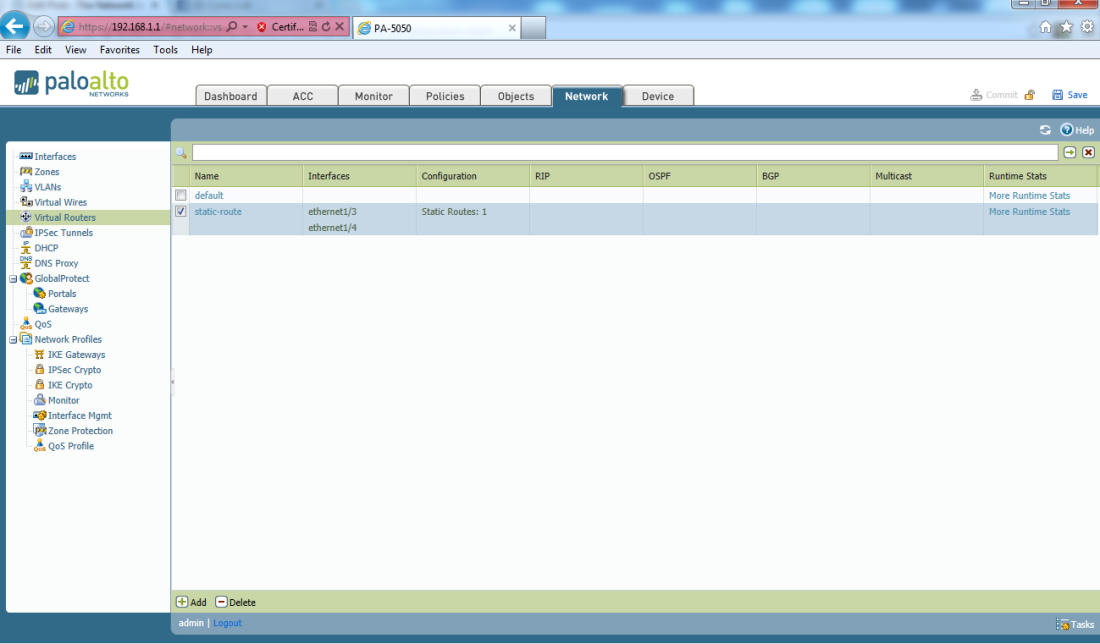

I have a little hint for you: When you want to display your current configuration, the output format is the xml output. This can be changed in the following way:
– (leave the configure mode via exit)
– set cli config-output-format set
– configure (= entering configure mode again)
– show
Now your configuration is shown with all the set commands you just configured.